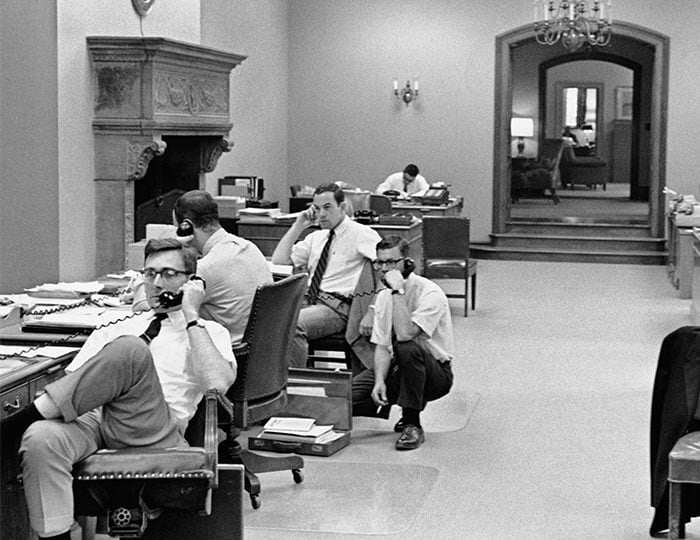Portrait of a Leader: Warren Staley
As CEO from 1999 to 2007, forward-thinking Staley shifts Cargill’s focus to strengthen customer relationships and nourish the world.
January 01, 2015
In 1966, Warren Staley had a summer internship with Cargill as a data processor. A few short months was all it took for Staley to realize that Cargill was where he belonged. At the time, the company was expanding rapidly across the globe—an opportunity that fascinated Staley. After joining the company in 1969, decade by decade Staley climbed the company ranks. He held positions in England and Argentina, as well as North America and Latin America, impressing colleagues with his work ethic and team-oriented style. They described him as “understated, not flashy; given more to listening than talking…but consistent and relentless in pursuit of an agreed-upon goal.”
In 1999, exactly 30 years after his start in Cargill’s corn milling business, Staley was appointed as Cargill’s new chief executive officer. It was the turn of the century and the beginning of a dramatic change in mindset at Cargill. “Staying the way we are is not an option,” Staley explained to employees. “We need to understand customers better than our competitors and, in some cases, understand our customers’ needs even better than the customers themselves.”
The message was clear: Cargill would shift its attention outward, deepening its relationships with partners, collaborating more closely with customers and developing innovations to answer their specific needs.
“We must embrace and lead change in order to prosper and grow.”
— Warren Staley, Chief Executive Officer of Cargill
Cargill’s new plan, called Strategic Intent, was a framework that encouraged shared leadership and industry diversification to set Cargill apart from the competition as every customer’s clear “partner of choice.”
The push for a unique position in the marketplace also led to a re-branding effort in 2002. Staley introduced a new company purpose—to be “the global leader in nourishing people”—an idea that extended beyond food and agriculture. “Our vision is to nourish the potential of people in the places where we operate,” he said. The CEO’s focus on community enrichment took volunteer teams to countries across the globe. In Kenya, Cargill funded medicine to treat intestinal worms for more than 150,000 children. In Vietnam, employees built fully equipped schools, and in Mexico, they constructed dozens of new houses with Habitat for Humanity. During Staley’s tenure, Cargill received several philanthropic honors, including the 2001 Award for Excellence in Community Service from the Points of Light Foundation.
After nine years of leadership, Staley retired in 2007, leaving behind a legacy of collaboration that remains a cornerstone of Cargill. His final contribution was Cargill’s High Performance Leadership Academy, which has trained over 12,500 company leaders, including current company CEO David MacLennan. “[We now have] the Staley leadership center,” MacLennan explained, “because he changed the way Cargill thought about leadership.” Former CEO Greg Page best summed up Staley’s contributions to developing a new Cargill: “He led the company’s transformation to a customer-based solutions provider; he instituted a new model of shared leadership; he reshaped the organization in ways that generated new growth, and he exemplified what it means to be a corporate citizen.”

[image caption] In 1969, a young Staley (third from left) begins his Cargill career as a merchant, working his way up to become CEO in 1999.
